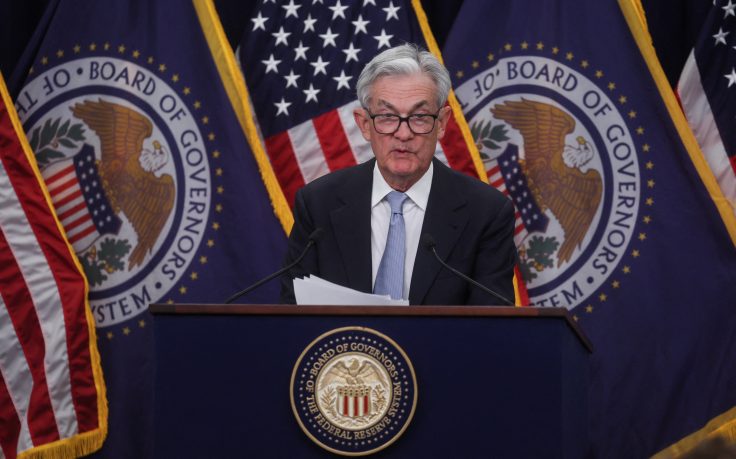By Howard Schneider and Ann Saphir
WASHINGTON (Reuters)—The Federal Reserve on Wednesday raised interest rates by a quarter of a percentage point, but indicated it was on the verge of pausing further increases in borrowing costs amid recent turmoil in financial markets spurred by the collapse of two U.S. banks.
The move set the U.S. central bank's benchmark overnight interest rate in the 4.75%-5.00% range, with updated projections showing 10 of 18 Fed policymakers still expect rates to rise another quarter of a percentage point by the end of 2023, the same endpoint seen in the December projections, even amid uncertainty about how much tighter financial conditions will weigh on a strong labor market and the currently resilient pace of inflation.
In a key shift driven by the sudden failures this month of Silicon Valley Bank (SVB) and Signature Bank, the Fed's latest policy statement no longer says that "ongoing increases" in rates will likely be appropriate. That language had been in every policy statement since the March 16, 2022 decision to start the rate hiking cycle.
Fed Chair Jerome Powell opened his post-meeting news conference with remarks focused on the recent banking crisis, seeking to reassure depositors, consumers and businesses that the system was sound after the spate of actions that the central bank and other regulators have taken in the last two weeks.
"These actions demonstrate that all depositors' savings in the banking system are safe," Powell said.
That said, the Fed chief said officials "are prepared to use all of our tools as needed to keep it safe and sound."
The turmoil, however, probably will take a toll on growth and the economic outlook, he said, with recent events likely to result in tighter credit conditions for households and businesses.
With it being too soon to determine the results of those effects, Powell said it was appropriate to proceed with a rate hike at this meeting but also to no longer say that "ongoing" rate increases were appropriate.
Yields on Treasury securities dropped following the release of the statement. The yield on the 2-year Treasury note, which is highly sensitive to Fed rate expectations, was down more than 20 basis points in the session.
U.S. stocks, which initially surged after the release of the policy statement, headed lower as Powell spoke, with the benchmark S&P 500 index down about 0.25% in late afternoon trading. The dollar weakened against a basket of major trading partner currencies.
"The Fed has been spooked by Silicon Valley Bank and other banking turmoil. They certainly point to that as a potential depressant on inflation, perhaps helping them do their job without having to raise rates as aggressively," said Tim Ghriskey, senior portfolio strategist at Ingalls & Snyder.
The policy-setting Federal Open Market Committee said only that "some additional policy firming may be appropriate," leaving open the chance that one more quarter-of-a-percentage-point rate increase, perhaps at the Fed's next meeting, would represent at least an initial stopping point for the hiking cycle.
Though the policy statement said the U.S. banking system is "sound and resilient," it also noted that recent stress in the banking sector is "likely to result in tighter credit conditions for households and businesses and to weigh on economic activity, hiring, and inflation."
There were no dissents on the policy decision.
ELEVATED INFLATION
The policy statement made no presumption that the battle with inflation has been won. The new statement dropped language saying that inflation "has eased" and replaced it with the declaration that inflation "remains elevated."
Job gains are "robust," according to the Fed.
Officials projected the unemployment rate would end the year at 4.5%, slightly below the 4.6% seen in projections issued in December, while the outlook for economic growth fell slightly to 0.4% from 0.5% in the previous projections. Inflation is now seen ending the year at 3.3%, compared to 3.1% in the last projections.
The outcome of the latest two-day policy meeting marks an abrupt repositioning of the central bank's strategy from just two weeks ago, when Powell testified in Congress that hotter-than-expected inflation would likely force the central bank to raise interest rates higher and possibly faster than expected.
The March 10 collapse of California-based SVB and the subsequent collapse of New York-based Signature Bank highlighted broader concerns about the health of the banking sector, and raised the possibility that further Fed rate increases might tip the economy towards a financial crisis.
(Reporting by Howard Schneider; Additional reporting by Noel Randewich in New York; Editing by Paul Simao)
